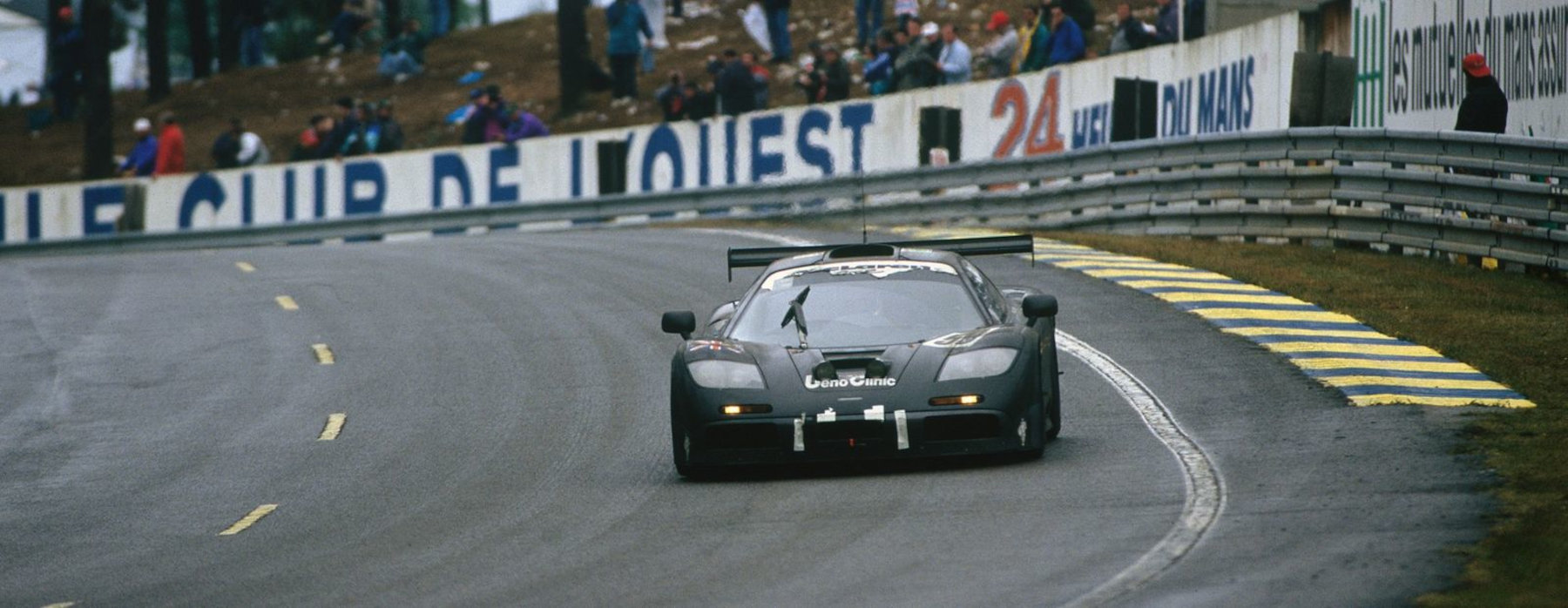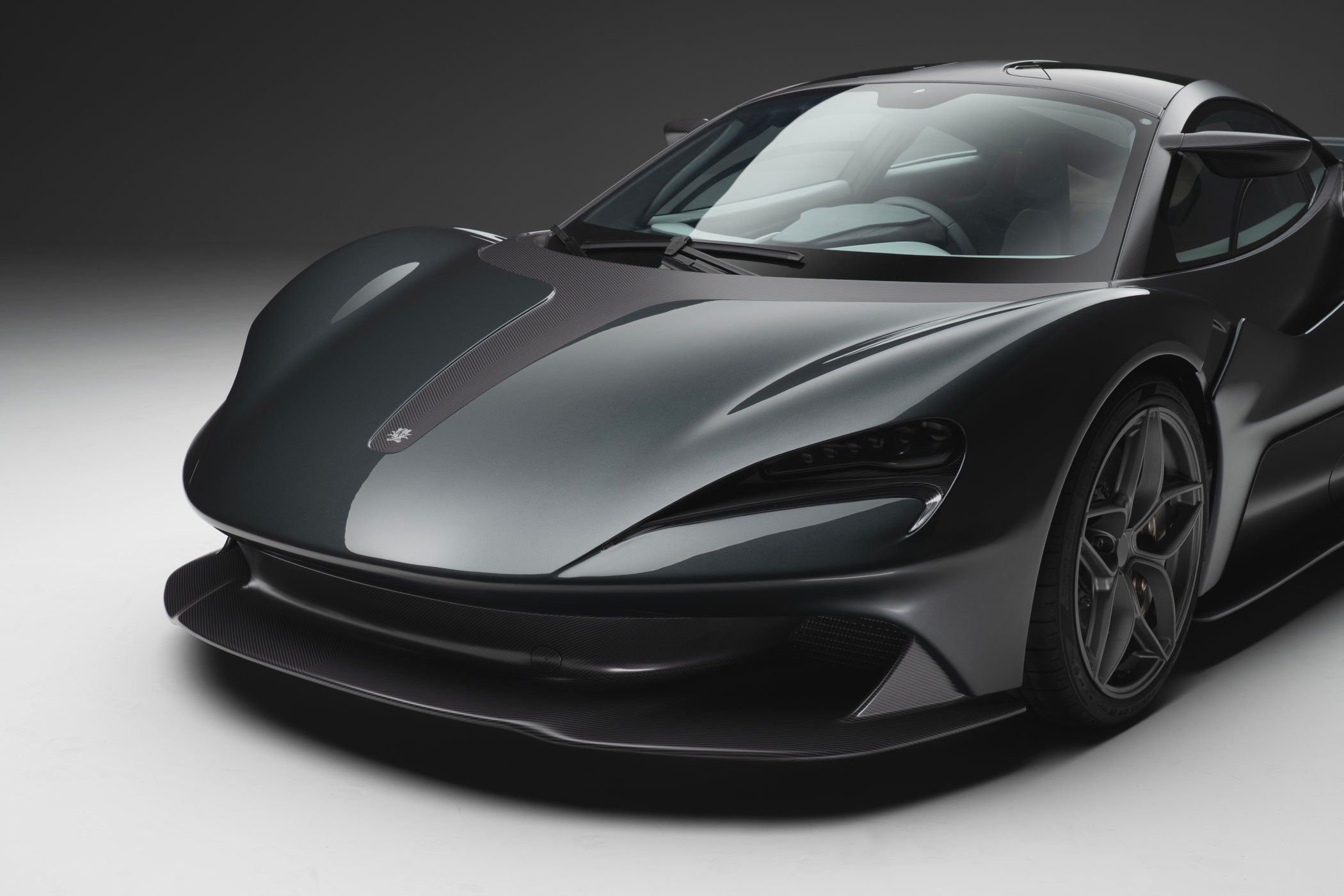I can assure you, your eyes are not deceiving you. Yes, this very much looks like a McLaren, and is, in fact, based on a McLaren, but is actually called the Lanzante 95-59. And for those with a passionate knowledge of racing, and more specifically the Le Mans 24 Hours, that should start ringing a few bells! Back in 1995, a certain legendary supercar with a three-seater layout and a V12 in the rear won the famous endurance race on its debut. The car I’m talking about is, of course, the McLaren F1 GTR. But did you know the company that the car was actually on loan to Lanzante to run at Le Mans? If you did, kudos, and if you didn’t, now you do. So the link between McLaren and Lanzante is a strong one, forged in racing, and now inspiring the 95-59, using the underpinnings of the McLaren 750S.
The story of the McLaren F1 GTR winning the 1995 edition of the 24 Hours of Le Mans is, of course, well-documented. It was the first time a car making its debut won overall since 1949, the first time a Finnish driver and a Japanese driver won, the first time Lanzante won as a team, and the last time a production-based racing car was victorious in the gruelling endurance race. So to say it is a legend is a bit of an understatement. But how did Lanzante get involved in all this?
 The Ueno Clinic McLaren F1 GTR, victorious in the 1995 Le Mans 24 Hours – McLaren.com
The Ueno Clinic McLaren F1 GTR, victorious in the 1995 Le Mans 24 Hours – McLaren.com
Lanzante Limited & The McLaren connection
Lanzante is far from a newcomer to the classic and supercar game, as Paul Lanzante founded the company in the 1970s. At first, Lanzante restored and prepared historic cars, and as time progressed, it built a reputation for its high-quality work in the field. By 1993, Paul’s son Dean would join the company and the activities expanded into modern motor racing. The company was already participating in historic motorsports years prior, but by 1995, Lanzante would enter the BPR Global GT Series, the precursor to the FIA GT Championship, with a race-prepped Porsche 911 Turbo. Alongside their newly formed racing venture, Lanzante also became a key service centre for, you’ve guessed it, McLaren F1s!
That same year, however, Lanzante also partnered with McLaren to take the F1 GTR to Le Mans. The F1 GTR raced in the BPR Global GT Series in 1995 and 1996, becoming champion both years. But Le Mans is a very different thing. McLaren loaned one of their F1 GTRs to Lanzante, who partnered with Kokusai Kaihatsu UK as the main sponsor, dressed the car in a dark grey and silver Ueno Clinic livery, enlisted the driving services of JJ Lehto, Masanori Sekiya and Yannick Dalmas, and set out to conquer Le Mans. Which they did, thanks to the F1’s high level of reliability and Lehto’s blistering pace! At some stages in the race, he was a staggering 30 seconds faster over a single lap than his direct competitors! The weather also helped to level the playing field between the various classes, which the F1 took full advantage of!
Since then, Lanzante has worked on a whole series of specialist and often bespoke one-off vehicles, mostly using McLaren cars as a platform. It built the McLaren P1 GTR-LM, which is a road-legal conversion for the track-only hypercar, a Spider version of the ‘regular’ P1, and also a series of McLaren LM 25 Editions to celebrate its 1995 Le Mans win (remember the Mansour Ojjeh collection?). Lanzante then converted one of the five Pagani Zonda Revolucións to be road-legal and built the Porsche 930 TAG Turbo, which uses a TAG-Porsche engine from the McLaren MP4/2 driven by Niki Lauda to victory in the 1984 British Grand Prix.
The 95-59, more than a dressed-up 750S
Now, though, it returns to McLaren once more, the company it is most experienced working with. And more specifically, it has used the 750S to build what is not only a spiritual homage to the F1 GTR’s Le Mans winning legacy, but also a reinterpretation of what the 750S is. And Lanzante states it’s not building “the next F1” with this one, but more something that clients have been requesting: a usable, somewhat practical supercar with space for more than two, plus luggage. And the name, if you’re wondering, is rather appropriate: 95 in reference to the year 1995, and 59 in reference to the racing number of the F1 GTR that won!
The donor car is stripped back and gets fully rebuilt with a new carbon fibre monocoque for the chassis to seat three instead of two. This also means a lot of work had to be done on other elements, like the shape and location of the fuel tank, the doors, the steering system, the pedal box, the bulkhead and so on. The result is a cabin that has a central driver’s position, with two butterfly doors to get in and out, and a completely redesigned exterior. And intriguingly, it looks very much like a central pod in bear carbon draped with a painted exterior shell, more or less like a fine lady dressed in a light summer’s dress. You see the elegant curves and all, but it’s covered up fluently and discreetly where it matters.
The front is completely redesigned, with a more aggressive, wider front splitter and air intake, menacing new headlights. The lines from the front to the back are rather subtle and curvaceous, instead of being sharply angled. The bow line from the front to the rear is very low and continuous down the full length, making for an elegant and energetic design.
A detail I really like is how the interior seems to be connected to the exterior, with a visual ‘spine’ running from the front into the cabin and the central seat, over the roof and down the back again. Around the back, you will notice the central Inconel exhaust and the large diffuser to help stick it to the road. The car retains the 750S’ active rear spoiler, which can be mounted flush with the rear body section or propped up for extra drama (and downforce).
Performance-wise, it also gets an upgrade. A standard 750S uses a 4.0-litre twin-turbocharged V8 pumping out 750 horsepower. Lanzante ups that to more than 850, sent through a 7-speed SSG automatic transmission. In terms of weight, Lanzante managed to shave off about 130 kilos, as the 95-59 tips the scales at 1,250kgs only. And although no exact figures are given for its 0-100kph run, or the top speed, the fact that it has more power and less weight means it should be quite a bit faster! For reference, the standard 750S hits 100 kilometres per hour in 2.8 seconds and has a top speed of 332kph. Sounds like a thrill-ride for sure!
Lanzante will build just 59 of these 95-59s, again linking it back to the 1995 Le Mans-winning F1 GTR. The price is eye-wattering GBP 1,020,000 without taxes, but that does include the donor car! And if compared to the prices of the McLaren F1, or even the McLaren Speedtail, this seems the least expensive three-seater option to put in our garage, should you want to!
For more information, please visit Lanzante.com.
Editorial Note: The information used and images portrayed in this article are sourced from and used with permission of Lanzante Limited, unless stated otherwise.
https://monochrome-watches.com/the-petrolhead-corner-lanzante-95-59-mclaren-f1-gtr-le-mans-1995-mclaren-750s-specs-price/








